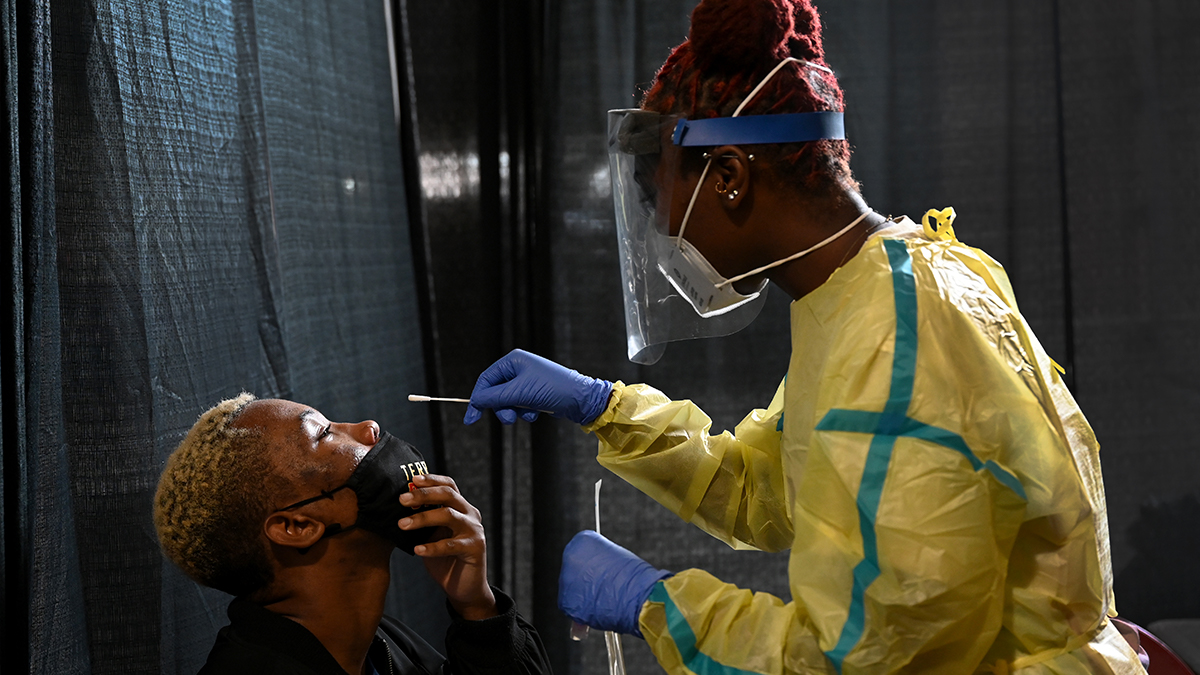Coronavirus metrics are showing some improvements from last week as some of the first students in the D.C. area begin their school year via online learning.
Spotsylvania County has started the year with virtual learning and plans to continue online through at least the first nine weeks of the year.
The digital divide may create trouble for some families, however: More than 4% surveyed told the school district that they either have no internet or limited, dial-up access at home. The school responded by opening up Wi-Fi hotspots at schools and mobile hotspots.
Other districts are trying on-site programs, too. Fairfax County is offering the "Supporting Return to School" program for students in kindergarten through sixth grade. Howard County has a similar program called " RecZone."
You must register for the programs and there are fees, but financial aid is also available.
In D.C., gatherings of five or more people and travel by plane and rideshare are linked to a significant portion of cases. The city will hire 175 contact tracers and begin conducting home visits for confirmed patients who couldn't be reached or didn't respond to an interview.
While average case numbers are trending downward, there are still some metrics to holding back reopening progress.
We're making it easier for you to find stories that matter with our new newsletter — The 4Front. Sign up here and get news that is important for you to your inbox.
What the Data Shows
The seven-day average of new cases added daily is down compared to last week, falling from 72 to 67 in D.C.; 713 to 637 in Maryland and 998 to 887 in Virginia.
Virginia is still struggling with a high positivity rate, with 7% of coronavirus tests showing the patient was infected. That's significantly higher than D.C. (3.5%) and Maryland (3.27%).
D.C. counted 53 new positive coronavirus cases on Monday. Community spread continues to be a problem in the District, the latest data suggest.
One of the city's key goals is to decrease community spread, but there has been a consistent increase between mid-June and early August.
The map below shows the number of coronavirus cases diagnosed per 1,000 residents.
Coronavirus Cases in DC, Maryland and Virginia
COVID-19 cases by population in D.C. and by county in Maryland and Virginia
Source: DC, MD and VA Health Departments
Credit: Anisa Holmes / NBC Washington
Local Coronavirus Headlines
- Virginia Gov. Ralph Northam unveiled a plan for limited new spending on blocking evictions, boosting high-speed internet access and more. Read about the plan.
- Nearly 600 school bus drivers and food service workers in Frederick County, Maryland, will temporarily be laid off as students learn online during the coronavirus pandemic. Read more.
- With reduced capacity at restaurants across the area, Arlington is facing a problem of people spilling out onto the sidewalk. Here's more.
- Just a day after Montgomery County, Maryland, temporarily shut down COVID-19 testing at four sites, the county announced all of its testing sites will be closed until further notice after the state raised questions about protocols used with some test kits. Read more.
- The monumental decision made by the Big Ten on Tuesday afternoon to postpone its fall football season was a blow to the hopes of coaches, players and fans in College Park. Read more.
- Many Maryland students will start the school year entirely online as the coronavirus pandemic continues — but local PTAs must meet in person, the state PTA says. Read more.
- The Fauquier County School Board voted Monday to switch to virtual-only instruction two weeks before students were expected to return to the classroom. Read more.
- New research by Children’s National Hospital in Washington, D.C., found racial disparities in how the coronavirus affects children. Read more.
Reopening Tracker
- Private and parochial schools in Maryland can choose when to reopen after a back-and-forth between county health officials and the governor. Read more.
- Prince George's County is revising its phase two reopening executive order due to an uptick in coronavirus cases, according to the county executive's office.
- Virginia entered phase three reopening on July 1, loosening restrictions on restaurants, stores, gyms and pools. Northam said more restrictions could be implemented if cases continue to grow.
- Prince George's County entered full phase two on June 23, allowing the MGM Casino and gyms to reopen.
- D.C. entered phase two on June 22, allowing indoor dining, gyms, libraries and houses of worship to reopen with restrictions.
- Montgomery County entered phase two on June 19, reopening with restrictions gyms, houses of worship, indoor dining and retail.
- Maryland entered phase two of reopening on June 10, permitting indoor dining, outdoor pools and outside amusements to reopen.
How to Stay Safe
There are ways to lower your risk of catching coronavirus. Here are guidelines from the CDC:
- Wear a snug-fitting mask that covers your nose and mouth.
- Avoid being indoors with people who are not members of your household. The more people you are in contact with, the more likely you are to be exposed to COVID-19. If you are indoors with people you don’t live with, stay at least six feet apart and keep your mask on.
- Wash your hands often, especially after you have been in a public place.
Sophia Barnes, Andrea Swalec and Anisa Holmes contributed to this report



